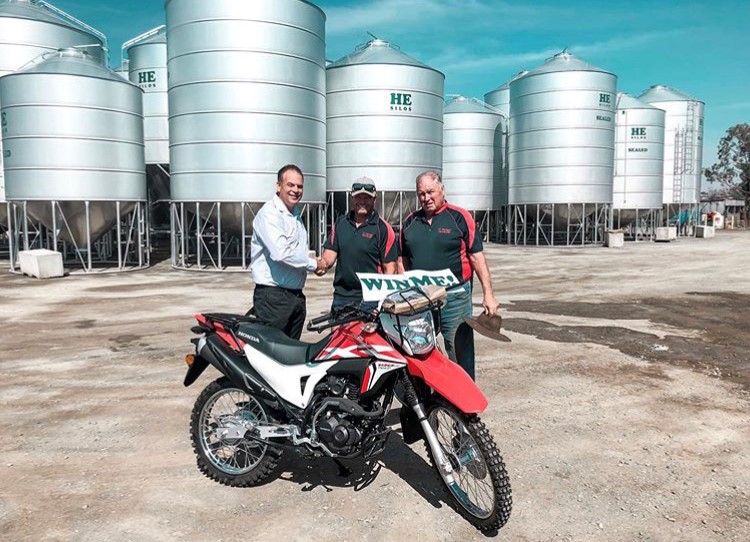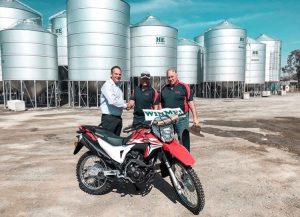THE TOUGH STUFF – The Difference Between Aeration Cooling and Drying

G’day there and welcome back to The Silologist blog.
Since we last left off, the team and I have been out and about having some fun at the Henty Field Days. We started setting up for week ahead on Monday and WE GOT SOME BLOODY RAIN. What a ripper. Tuesday kicked in, and it was a busy start to the week, with customers enquiring mostly about on farm storage which was great. Our busiest days were Tuesday and Wednesday, which we loved every minute of. The wind picked up on Tuesday and so did the temperature as the week went on. Wednesday saw the ever so talented Chris Warrick from GRDC give an onsite demonstration on how to pressure test your silo. Everyone seemed to get around the topic, and we were pleased to learn a thing or two from Chris ourselves. By Thursday we had our major giveaway which marked our 50th Birthday and the following legends walked away with some top notch prizes:
2nd prize ($3000 Luxury Escape voucher): Dale Curtis – Trundle
A big congratulations to all of prize winners, very well deserved!
Enough about the field days, we’ve got a fairly topical discussion that needs some attention.
The big question that you’ve all been asking is: ‘What is the difference between aeration cooling and aeration drying?’
The good news is, I’m here to give you the answer.
We’re trying to do two different things when cooling and drying.
Basically aeration cooling is all about bringing the grain temperature down which then slows the lifecycles of insects. If we can get the temperature down below that sort of 20-15 degree mark, we can stop the insect lifecycle altogether. That’s achieved with small airflow rates, about 2-4 litres of air per second, per tonne which can be achieved with a little aeration cooling fans.
 In terms of aeration drying, we need to pull the moisture out of the grain, and aim for a much higher airflow. Anything upwards of 15 litres of air per second, per tonne is what we’re after. It’s really different to cooling at 2-4 litres, because with drying you want upwards of 15 litres.
In terms of aeration drying, we need to pull the moisture out of the grain, and aim for a much higher airflow. Anything upwards of 15 litres of air per second, per tonne is what we’re after. It’s really different to cooling at 2-4 litres, because with drying you want upwards of 15 litres. When you think about the amount of moisture you actually have to carry out of the grain and out of the silo, it makes sense why you need such high airflow rates for drying – Chris Warrick – GRDC





